-
 Bitcoin
Bitcoin $83,384.0103
-0.52% -
 Ethereum
Ethereum $1,808.8880
-0.27% -
 Tether USDt
Tether USDt $0.9996
-0.01% -
 XRP
XRP $2.1285
0.17% -
 BNB
BNB $590.6650
-1.02% -
 Solana
Solana $119.8001
-1.16% -
 USDC
USDC $1.0000
-0.01% -
 Dogecoin
Dogecoin $0.1672
-1.52% -
 Cardano
Cardano $0.6450
-2.14% -
 TRON
TRON $0.2358
-0.73% -
 UNUS SED LEO
UNUS SED LEO $9.1542
-0.44% -
 Chainlink
Chainlink $12.7548
-1.04% -
 Toncoin
Toncoin $3.2310
-2.48% -
 Stellar
Stellar $0.2517
-2.57% -
 Avalanche
Avalanche $17.3882
-4.28% -
 Shiba Inu
Shiba Inu $0.0...01223
-0.63% -
 Sui
Sui $2.1802
-2.73% -
 Hedera
Hedera $0.1601
-2.08% -
 Litecoin
Litecoin $82.2437
-2.91% -
 Polkadot
Polkadot $3.9303
-2.19% -
 MANTRA
MANTRA $6.2192
-1.01% -
 Bitcoin Cash
Bitcoin Cash $295.8200
-1.72% -
 Dai
Dai $1.0000
0.00% -
 Bitget Token
Bitget Token $4.4500
-1.78% -
 Ethena USDe
Ethena USDe $0.9991
0.00% -
 Pi
Pi $0.6522
50.32% -
 Monero
Monero $214.4466
-1.61% -
 Hyperliquid
Hyperliquid $11.5830
-3.12% -
 Uniswap
Uniswap $5.8275
-1.00% -
 OKB
OKB $54.4412
7.17%
How does blockchain prevent double payment problems?
Blockchain's decentralized, immutable ledger prevents double-spending by cryptographically linking transactions across a distributed network, making altering past records computationally infeasible. Consensus mechanisms validate transactions, while rewards incentivize honest participation.
Mar 17, 2025 at 03:00 pm
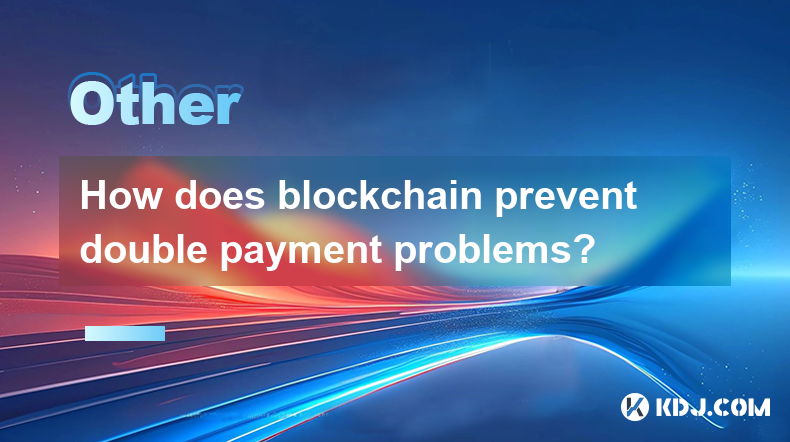
Key Points:
- Blockchain's decentralized and immutable ledger prevents double-spending by recording all transactions across a distributed network.
- Cryptographic hashing ensures the integrity of each block, making it computationally infeasible to alter past transactions.
- Consensus mechanisms like Proof-of-Work (PoW) and Proof-of-Stake (PoS) validate transactions and add new blocks to the chain, preventing fraudulent additions.
- The distributed nature of the blockchain means no single entity controls the system, making it resistant to manipulation.
- Mining/Staking rewards incentivize honest participation in the network, further deterring double-spending attempts.
How Does Blockchain Prevent Double Payment Problems?
The fundamental problem with digital currencies before blockchain was the possibility of double-spending. A user could potentially spend the same digital asset twice, leading to financial loss for recipients and system instability. Blockchain technology elegantly solves this through a combination of cryptographic techniques and distributed consensus.
The core of the solution lies in the immutable and distributed nature of the ledger. Every transaction is recorded in a "block," which is then added to a chain of previous blocks. This chain is replicated across numerous computers (nodes) in the network. Altering a single transaction would require altering every subsequent block across the entire network, a computationally impossible task.
Cryptographic hashing plays a crucial role in maintaining the integrity of the blockchain. Each block contains a cryptographic hash of the previous block, creating a chain where tampering with one block immediately invalidates the hash of the following block. This creates a tamper-evident record of all transactions.
The process of adding new blocks to the blockchain is governed by a consensus mechanism. Different cryptocurrencies employ various mechanisms, with Proof-of-Work (PoW) and Proof-of-Stake (PoS) being the most prevalent. PoW requires miners to solve complex computational problems to validate transactions and add new blocks. PoS, on the other hand, selects validators based on the amount of cryptocurrency they stake. Both mechanisms ensure that only legitimate transactions are added to the blockchain.
The decentralized nature of the blockchain is critical in preventing double-spending. Unlike centralized systems where a single entity controls the database, blockchain distributes the ledger across a vast network. This makes it virtually impossible for any single entity to manipulate the transaction history and authorize a double-spending attempt.
Furthermore, the incentive structure within blockchain networks discourages malicious behavior. Miners/validators are rewarded for their participation in securing the network. Attempting to double-spend would result in the rejection of the fraudulent transaction, leading to a loss of potential rewards and possibly penalties. This economic incentive aligns the interests of network participants with the security and integrity of the blockchain.
The speed at which new blocks are added to the chain (block time) also plays a role. A shorter block time means that fraudulent transactions are less likely to be confirmed before the legitimate transaction is added to the blockchain. However, this also needs to be balanced with the security of the network.
Let's examine a specific scenario. Imagine Alice wants to send 1 BTC to Bob and then try to spend the same 1 BTC to Carol. The network would register Alice's transaction to Bob first. Once this transaction is confirmed and added to a block, the subsequent attempt to send the same 1 BTC to Carol will be rejected as the coins are already accounted for. The blockchain's distributed nature and cryptographic security prevent this fraudulent transaction from being accepted by the network.
This intricate system of cryptographic hashing, distributed consensus, and economic incentives ensures that the risk of double-spending is practically eliminated. This is a key innovation that underpins the trust and security of blockchain-based cryptocurrencies. The distributed ledger provides a transparent and auditable record of all transactions, providing a significant improvement over traditional payment systems.
Frequently Asked Questions:
Q: What happens if two transactions involving the same coins are submitted simultaneously?
A: Blockchain networks use a consensus mechanism to determine which transaction is valid. The first transaction to be verified and added to a block is the one that will be accepted. The second transaction will be rejected because the coins have already been spent.
Q: Can a 51% attack lead to double-spending?
A: A 51% attack, where a single entity controls over 50% of the network's hashing power (in PoW systems), theoretically allows for double-spending. However, this is extremely difficult and costly to achieve for most established blockchains due to the significant resources required.
Q: How does the immutability of the blockchain prevent double-spending?
A: The immutability of the blockchain ensures that once a transaction is recorded and confirmed, it cannot be altered or reversed. This prevents malicious actors from changing the transaction history to reflect a double-spending attempt.
Q: Are there any weaknesses in the blockchain's double-spending prevention mechanism?
A: While extremely robust, the system isn't entirely invulnerable. As mentioned, a successful 51% attack is a theoretical weakness. Also, vulnerabilities in the specific implementation of the consensus mechanism or cryptographic algorithms could potentially be exploited, though this is rare.
Q: How does the blockchain differ from traditional payment systems in preventing double-spending?
A: Traditional payment systems rely on central authorities (banks) to prevent double-spending. Blockchains, however, utilize a decentralized and cryptographic approach, eliminating the need for a central trusted party and making the system more resilient to fraud.
Disclaimer:info@kdj.com
The information provided is not trading advice. kdj.com does not assume any responsibility for any investments made based on the information provided in this article. Cryptocurrencies are highly volatile and it is highly recommended that you invest with caution after thorough research!
If you believe that the content used on this website infringes your copyright, please contact us immediately (info@kdj.com) and we will delete it promptly.
- Coinbase CEO Brian Armstrong Calls for Stablecoin Legislation to Enable On-Chain Interest
- 2025-04-06 12:10:12
- Trump's New Secondary Tariff Strategy Lacks Finesse, Involves Millions
- 2025-04-06 12:10:12
- Tether Expands Bitcoin Holdings with New Purchase of 8,888 BTC
- 2025-04-06 12:05:12
- Tether Holdings Ltd. (USDT) Buys the Dip, Acquiring 8,888 BTC
- 2025-04-06 12:05:12
- Tether Expands Bitcoin Holdings With $735M Purchase of 8,888 BTC
- 2025-04-06 12:00:12
- Solaxy (SOLX) Leads the Charge as Inflows Return to Crypto Investment Products
- 2025-04-06 12:00:12
Related knowledge
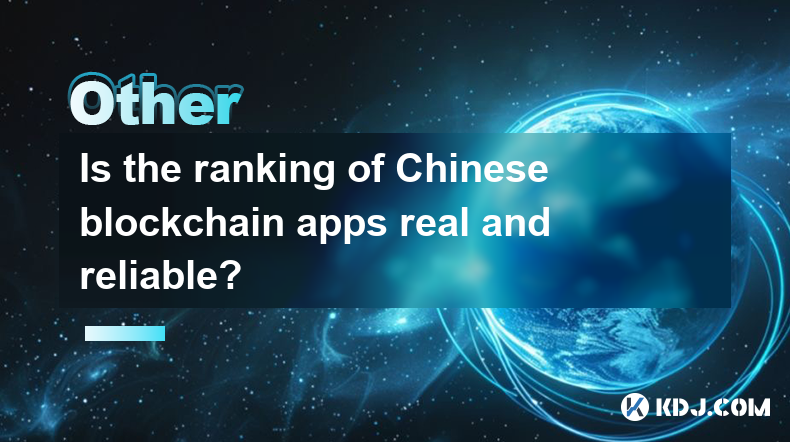
Is the ranking of Chinese blockchain apps real and reliable?
Apr 04,2025 at 09:01pm
The ranking of Chinese blockchain apps has become a topic of interest for many in the cryptocurrency community, as it provides insights into the popularity and adoption of blockchain technology within China. However, the reliability and authenticity of these rankings are often questioned. This article aims to delve into the factors that influence these ...
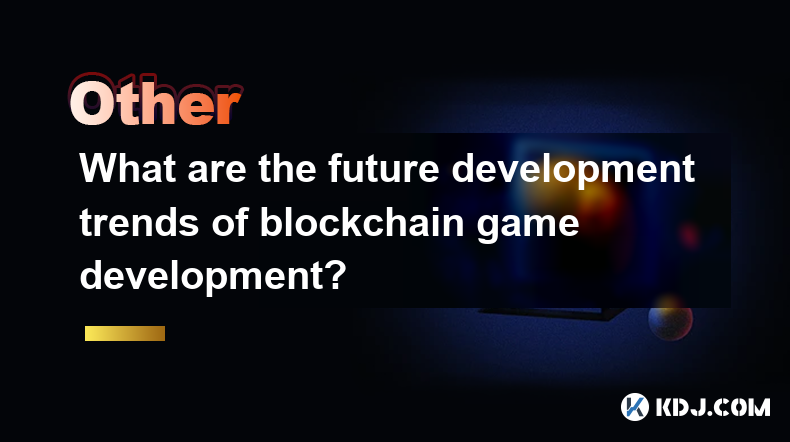
What are the future development trends of blockchain game development?
Apr 03,2025 at 05:00am
Blockchain technology has revolutionized various industries, and gaming is no exception. As we look to the future, several trends are set to shape the development of blockchain games. These trends not only promise to enhance the gaming experience but also to integrate blockchain technology more seamlessly into the gaming ecosystem. Let's explore these t...
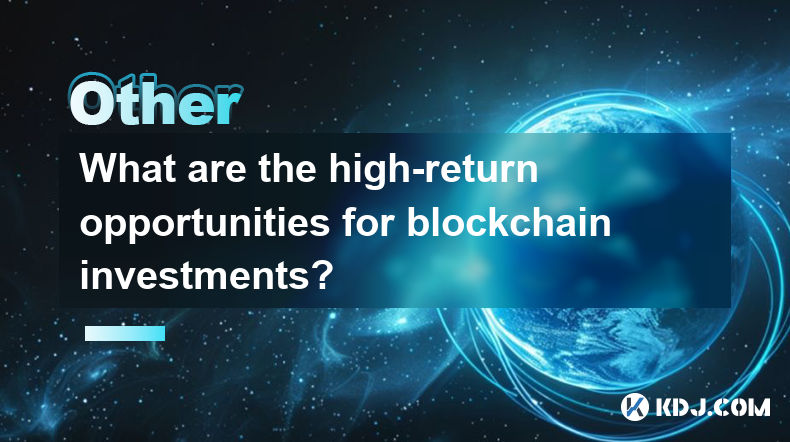
What are the high-return opportunities for blockchain investments?
Apr 05,2025 at 02:35pm
Blockchain technology has revolutionized the financial world, offering numerous high-return investment opportunities. These opportunities span various sectors within the cryptocurrency ecosystem, including cryptocurrencies, decentralized finance (DeFi), non-fungible tokens (NFTs), and blockchain startups. Each of these areas presents unique risks and re...
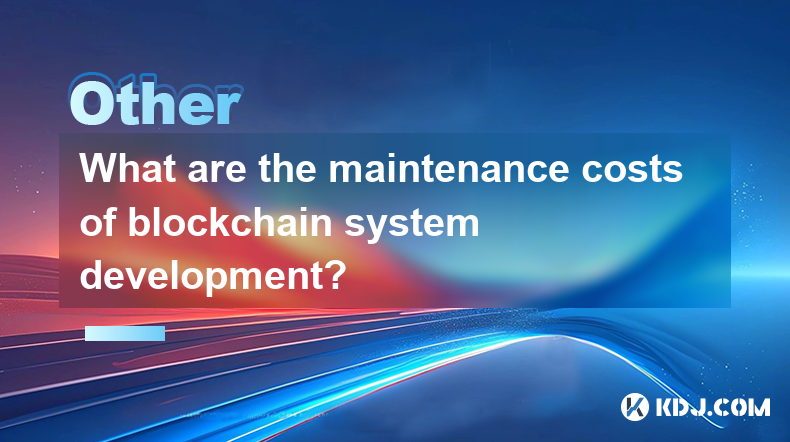
What are the maintenance costs of blockchain system development?
Apr 03,2025 at 06:07pm
The maintenance costs of blockchain system development are multifaceted and depend on various factors. These costs can include technical maintenance, security updates, infrastructure expenses, and personnel costs. Understanding these elements is crucial for anyone planning to develop or maintain a blockchain system. Technical MaintenanceTechnical mainte...
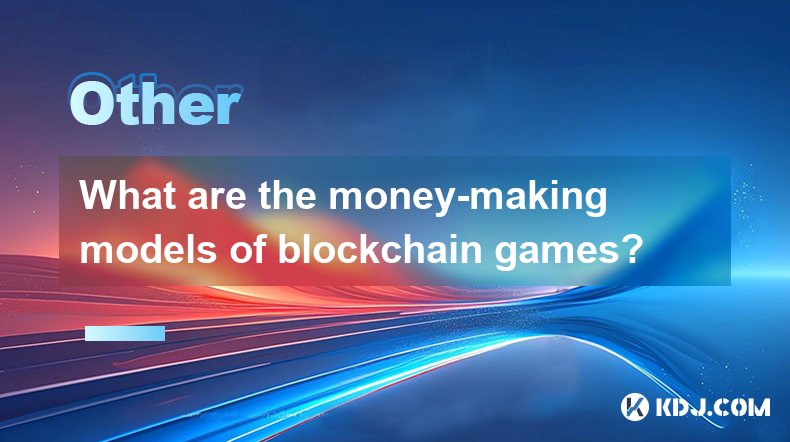
What are the money-making models of blockchain games?
Apr 04,2025 at 02:00pm
Blockchain games have emerged as a revolutionary way for players to earn real money while enjoying their favorite pastime. These games leverage the power of blockchain technology to create unique money-making models that benefit both the players and the developers. In this article, we will explore the various money-making models of blockchain games and ...
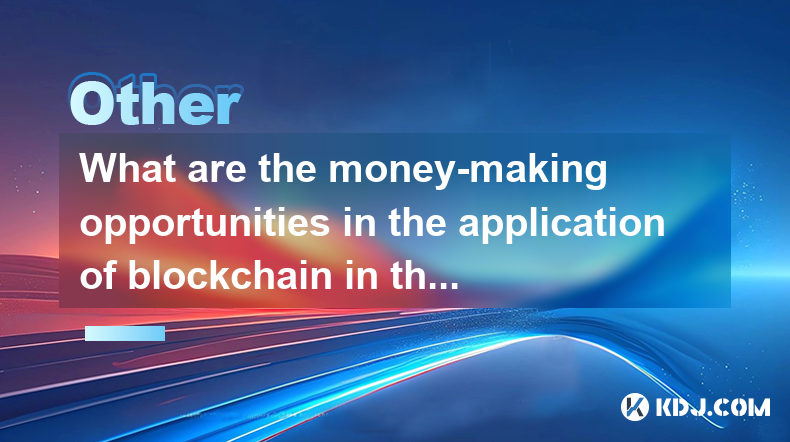
What are the money-making opportunities in the application of blockchain in the field of Internet of Things?
Apr 05,2025 at 10:35pm
The integration of blockchain technology with the Internet of Things (IoT) presents numerous money-making opportunities. Blockchain, with its decentralized and secure nature, can revolutionize how IoT devices interact, manage data, and conduct transactions. This article will explore various avenues where entrepreneurs, developers, and investors can capi...

Is the ranking of Chinese blockchain apps real and reliable?
Apr 04,2025 at 09:01pm
The ranking of Chinese blockchain apps has become a topic of interest for many in the cryptocurrency community, as it provides insights into the popularity and adoption of blockchain technology within China. However, the reliability and authenticity of these rankings are often questioned. This article aims to delve into the factors that influence these ...

What are the future development trends of blockchain game development?
Apr 03,2025 at 05:00am
Blockchain technology has revolutionized various industries, and gaming is no exception. As we look to the future, several trends are set to shape the development of blockchain games. These trends not only promise to enhance the gaming experience but also to integrate blockchain technology more seamlessly into the gaming ecosystem. Let's explore these t...

What are the high-return opportunities for blockchain investments?
Apr 05,2025 at 02:35pm
Blockchain technology has revolutionized the financial world, offering numerous high-return investment opportunities. These opportunities span various sectors within the cryptocurrency ecosystem, including cryptocurrencies, decentralized finance (DeFi), non-fungible tokens (NFTs), and blockchain startups. Each of these areas presents unique risks and re...

What are the maintenance costs of blockchain system development?
Apr 03,2025 at 06:07pm
The maintenance costs of blockchain system development are multifaceted and depend on various factors. These costs can include technical maintenance, security updates, infrastructure expenses, and personnel costs. Understanding these elements is crucial for anyone planning to develop or maintain a blockchain system. Technical MaintenanceTechnical mainte...

What are the money-making models of blockchain games?
Apr 04,2025 at 02:00pm
Blockchain games have emerged as a revolutionary way for players to earn real money while enjoying their favorite pastime. These games leverage the power of blockchain technology to create unique money-making models that benefit both the players and the developers. In this article, we will explore the various money-making models of blockchain games and ...

What are the money-making opportunities in the application of blockchain in the field of Internet of Things?
Apr 05,2025 at 10:35pm
The integration of blockchain technology with the Internet of Things (IoT) presents numerous money-making opportunities. Blockchain, with its decentralized and secure nature, can revolutionize how IoT devices interact, manage data, and conduct transactions. This article will explore various avenues where entrepreneurs, developers, and investors can capi...
See all articles





















































































